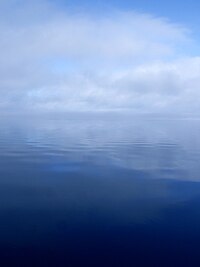
Photo from wikipedia
BACKGROUND Water activity is measured by equilibrating a test portion with a sealed head space and measuring the test portion temperature and the vapor density of the head space. The… Click to show full abstract
BACKGROUND Water activity is measured by equilibrating a test portion with a sealed head space and measuring the test portion temperature and the vapor density of the head space. The water activity is the ratio of head space vapor density to the saturation vapor density at test portion temperature. Headspace vapor density is typically measured using capacitance or chilled mirror sensors, but, when volatiles in significant concentration are present, these measurements may fail. OBJECTIVE Evaluate the accuracy of a tunable diode laser for measuring the headspace vapor density and water activity of pharmaceutical preparations and food in the presence of non-aqueous volatiles. METHODS A commercial TDL water activity meter was calibrated against standards of known water activity and used to measure water activity of pharmaceutical preparations and food with high concentrations of non-aqueous volatiles. RESULTS When no volatiles other than water vapor are present, this method is capable of measuring water activity with an accuracy of 0.005 or better. When high concentrations of volatiles such as ethanol (EtOH), isopropanol (IPA), propylene glycol (PG), tetrahydrofuran (THF), or acetonitrile (MeCN) are present the uncertainty of the measurement increases. This is at least partly due to the uncertainty of the standards. CONCLUSION Based on uncertainties in the water activity estimates of the water-organic mixtures, the uncertainties in water activity measurements with high concentrations of non-aqueous solvents is 0.02 or less up to mass fractions of the organic of 0.97. HIGHLIGHTS The theoretical background for TDL measurement of water activity is presented showing that the water vapor concentration is proportional to the area of the absorption line which is not affected by the presence of other volatiles.
Journal Title: Journal of AOAC International
Year Published: 2022
Link to full text (if available)
Share on Social Media: Sign Up to like & get
recommendations!